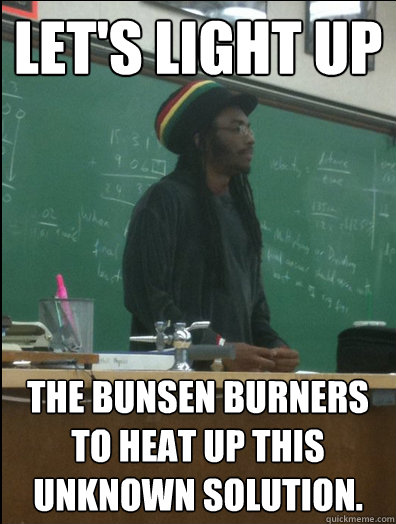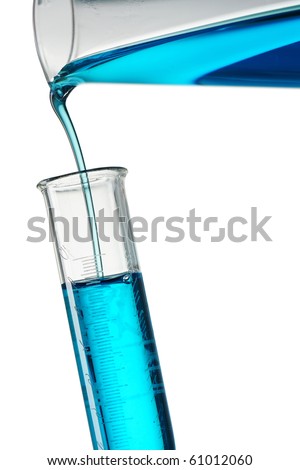We, as diligent chemistry students, want to find out the reaction between the solutions NaCO3 and CaCl2, determine which is limiting and which is excess reactant, determine what the theoretical mass of the precipitate that should form, AND to compare the actual mass to the theoretical mass of the precipitate and calculate the percent yield.
In order to do this lab you will need...
- SAFETY GOGGLES. (Here's the thing, it might shock you... deep breath... YOU MIGHT NEED YOUR EYES IN THE FUTURE. LE GASP!)
- 1 Centigram
- 2 gradulated cylinders (25mL)
- 1 beaker (250mL)
- 1 wash bottle
- 1 filtering apparatus (1 ring stand, Erlenmeyer flask (250mL), 1 funnel)
- 1 filter paper
- 25mL of 0.70M NaCO3 solution
- 25mL of 0.50M CaCl2 solution
Now, after you've got all your things, all you have to do is...
- COMBINE the NaCO3 solution with the CaCl2 solution
- Observe... wait now for 5 minutes. You can weigh your filter paper.
- While waiting for the reaction to fully react, set up your filtering apparatus.
- When setting up your filtering apparatus, using the wash bottle, lightly wet the filter paper so it sticks to the funnel.
- Swirl your beaker of precipitation and slowly pour your solution into the apparatus. Take your time with this.
- Using the wash bottle, squirt some water into the beaker to get the remaining precipitate out. Also rinse the precipitate in the filter paper to remove the NaCl2.
- Remove the filter paper and let it dry.
- Clean up.
Day 2
- After it has dried, weigh it again. Record.
Now, wasn't that easy? And also SOOOO fun? Do you know what this white precipitate is? It is actually.... *drum roll*
CHALK?! (Don't worry it won't kill you... BUT THAT DOESN'T MEAN YOU SHOULD EAT IT.)
The equation for this bad boy...
1 Na2CO3 + 1 CaCl2 --> 2 NaCl + 1 CaCo3
Have Fun!!













